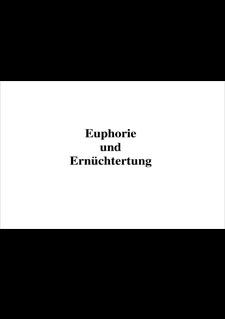Euphoria and Disillusionment
The National Socialists fundamentally changed their religious policy after their “seizure of power” on January 30, 1933. Hitler abandoned the neutrality he had displayed and began a propaganda campaign favorable to the church, primarily with an eye toward the Reichstag elections on March 5, 1933.
Protestants welcomed Hitler as a God-sent alternative to godless Bolshevism, who was well-disposed toward the church. The overwhelming majority of Protestants expected the spark of national awakening to spread and thus also revitalize their church.
Protestant church governments also abandoned their reserve after Easter of 1933 and publicly backed Hitler and the new state. A majority of Protestants succumbed to the allure of a national awakening. It blinded them to the persecution of Communists, Social Democrats and Jews. The erection of concentration camps did not arouse any criticism, either.
This was especially true for the church faction of the “German Christian Faith Movement” (GDC) in particular, which had been striving to bring Nazi political objectives into the domain of the Protestant church since 1932. The GDC’s early wave of ecclesio-political success already reached its pinnacle however when it won the church elections in July of 1933. Church opposition formed around Martin Niemöller and others. Public expression of this clash within the church was the church opposition’s first National Synod of the Confessing Church in Barmen from May 29 to 31 1934.
The intensity with which Protestantism supported the “national awakening” was indicative of mainstream Protestantism’s national conservative orientation. The rapidity with which disillusionment began spreading in 1934 despite the initial euphoria and even more so after 1935 when the Nazi government pursued a restrictive church policy is striking.

